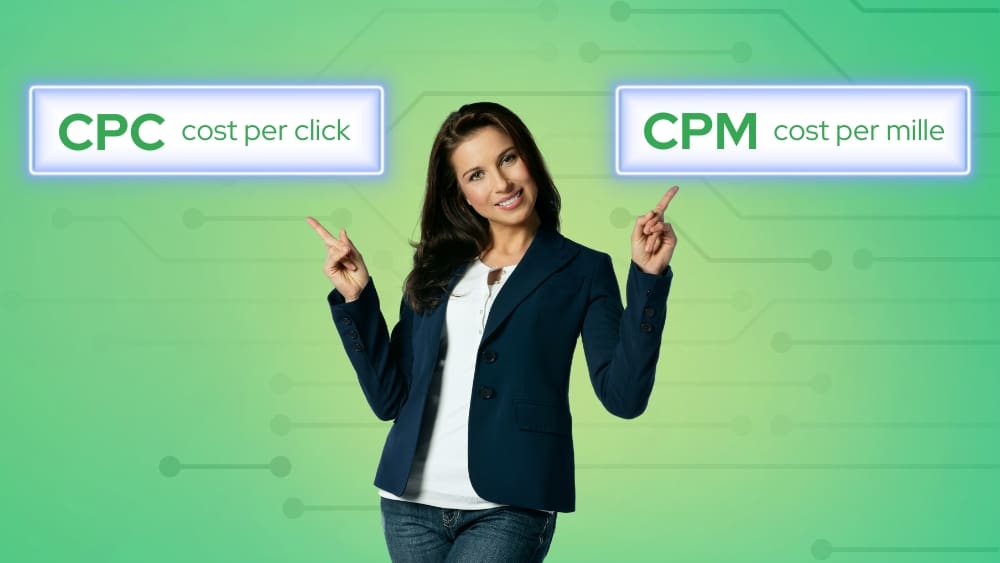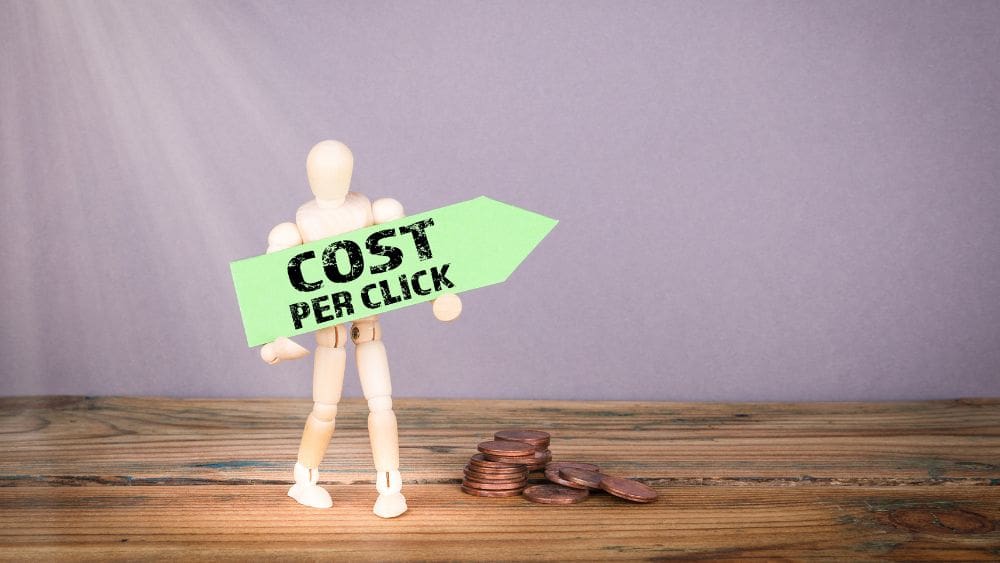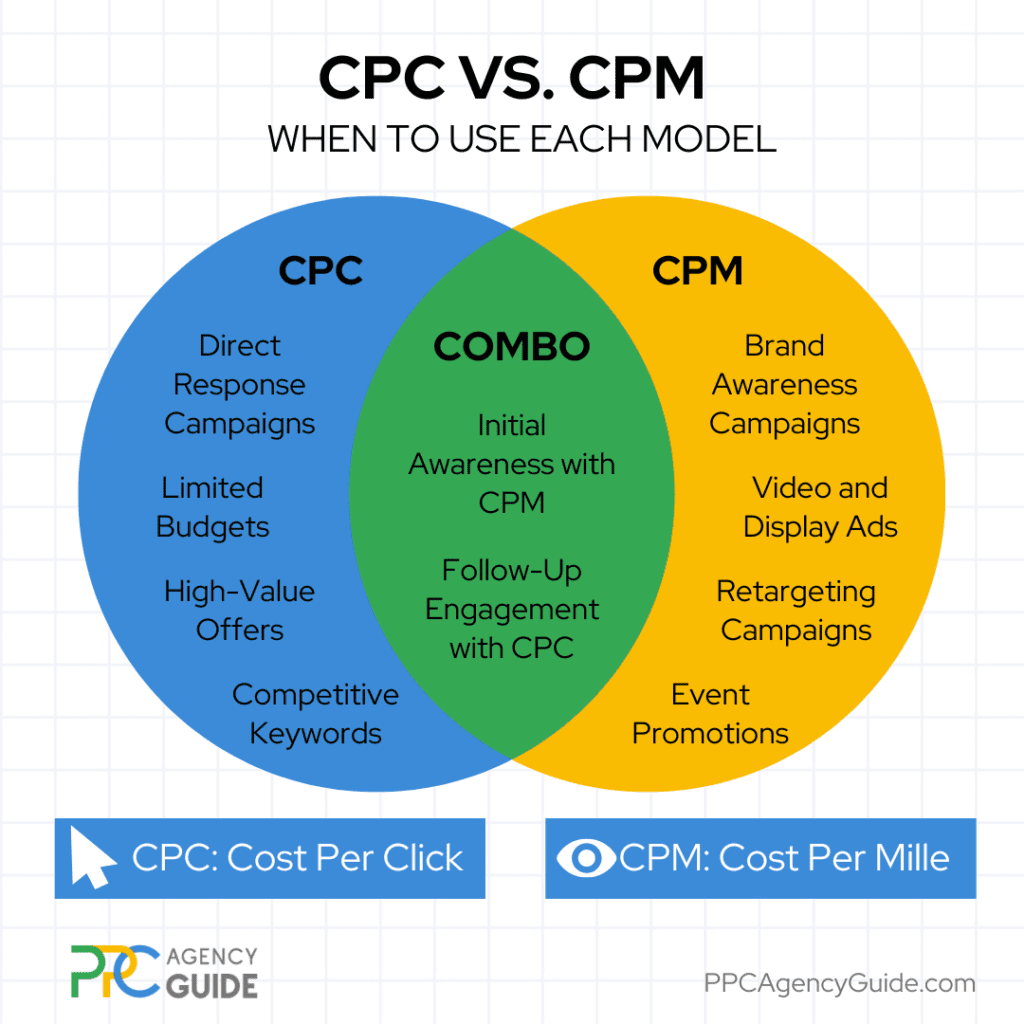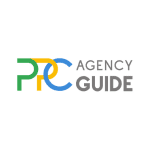
Did you know that global digital advertising spend is around $550 billion annually, per Statista? Experts say it will exceed $870 billion within three years. This massive market pays off for many businesses, but it’s crucial to ensure every dollar spent makes sense. Choosing the right pricing model is a major part of this, but a lot of businesses hit a wall when evaluating CPC vs. CPM. On this page, we’ll walk you through how they work, explore the pros and cons of each, and help you pick the best one based on your needs and goals.
Overview of CPC
CPC stands for cost per click. It’s a pricing model used in online advertising where advertisers pay a fee each time one of their ads is clicked. Essentially, it’s a way of buying site visits rather than organically earning those visits.
Benefits of CPC
- Cost Control: With CPC, you only pay when someone clicks on your ad and actually engages with it. This means your budget is directly tied to measurable actions.
- Measurable ROI: CPC makes it easy to track the return on investment (ROI) for your campaigns. You can see exactly how much you’re spending for each click and compare that to the revenue generated from those clicks.
- Targeted Traffic: CPC campaigns can be highly targeted. You can tailor your ads to specific audiences based on demographics, interests, and behaviors, ensuring that your clicks come from potential customers.
- Flexibility: CPC allows you to adjust your bids and budgets in real time based on performance. If a particular keyword or ad isn’t performing well, you can quickly make changes.
Drawbacks of CPC
- Costly Competitive Markets: In highly competitive industries, the cost per click can be very high. For example, the average CPC for legal services can exceed $50 per click in the U.S., which can quickly eat into your budget.
- Click Fraud: There is a risk of click fraud, where competitors or malicious users click on your ads with no intention of making a purchase, driving up your costs without delivering real value.
- No Guaranteed Conversions: Just because someone clicks on your ad doesn’t mean they’ll convert into a customer. High click-through rates (CTRs) are great, but if those clicks don’t lead to sales, you might end up spending money without seeing a return.
Example of a CPC Campaign in Action
Let’s take the example of a small online retail business selling handmade jewelry. They decide to run a CPC campaign on Google Ads with a budget of $500 per month.
- Cost Control: They set a maximum bid of $1.50 per click, ensuring they won’t exceed their budget.
- Measurable ROI: After a month, they see that they’ve received 300 clicks, costing them the full $500. By analyzing their sales data, they discovered these clicks resulted in 15 sales, generating $1,500 in revenue. Because of this, they can see a clear return on their investment.
- Targeted Traffic: They targeted their ads to women aged 25-45 with interests in fashion and handmade crafts, ensuring their ads were shown to a relevant audience.
While CPC provided clear benefits like cost control and targeted traffic, they also faced drawbacks. The jewelry market is competitive, and they found themselves paying $2 per click for certain keywords, which stretched their budget. Additionally, some clicks didn’t convert to sales, highlighting the importance of optimizing their landing pages and ad copy.
Overview of CPM
CPM stands for cost per mille, with “mille” being Latin for thousand. In this pricing model, advertisers pay a set fee for every 1,000 impressions (views) of their ad. It’s a common model for display and video ads.
Benefits of CPM
- Brand Awareness: CPM is excellent for campaigns aimed at increasing brand awareness. You pay for visibility, ensuring your ad is seen by a large audience.
- Predictable Costs: CPM pricing is straightforward. You know exactly how much you’re paying for a certain number of impressions, making it easier to budget.
- High Reach: CPM advertising can achieve a broad reach quickly, making it ideal for new product launches, promotions, or any situation where widespread exposure is needed.
- Better for Non-Click Engagements: If your campaign goal is not immediate clicks but rather video views, post engagements, or other forms of interaction, CPM can be more effective.
Drawbacks of CPM
- No Guarantee of Engagement: Paying per impression means you’re charged whether or not users interact with your ad. Your ad might be seen by many, but without any engagement, the campaign might not be effective.
- Potential for Lower ROI: If your primary goal is driving direct actions like sales or sign-ups, CPM might not provide the best ROI. You might pay for lots of views but see little in the way of conversions.
- Ad Blindness: Users might ignore your ad completely, especially if it’s not engaging or relevant, which can lead to wasted impressions.
Example of a CPM Campaign in Action
Picture a small software company launching a new productivity app. They decide to run a CPM campaign on Facebook with a budget of $1,000 and a CPM rate of $10.

- Brand Awareness: Their ad is displayed 100,000 times (1,000 impressions per $10 CPM). This high number of impressions ensures their new app gets significant visibility.
- Predictable Costs: They know upfront that their $1,000 will guarantee 100,000 impressions, making it easy to plan their budget.
- High Reach: Within a few days, the ad reaches a large audience, spreading awareness about their new app quickly.
However, they also encounter some drawbacks:
- No Guarantee of Engagement: Despite the high number of impressions, they notice only a small percentage of users click through to learn more about the app.
- Ad Blindness: Some users scroll past the ad without noticing it, reducing the potential effectiveness of their campaign.
To improve the campaign’s effectiveness, they decide to enhance their ad creatives, making them more engaging and relevant to the target audience. They also implement A/B testing to find the most compelling versions of their ads.
CPM vs. CPC: When to Use Each Model
Choosing the right pricing model for your advertising campaigns is crucial because it directly impacts your campaign’s effectiveness and ROI. Different goals and contexts require different approaches, and understanding when to use CPM versus CPC can help you optimize your budget and achieve your desired outcomes.
When to Select CPM
- Brand Awareness Campaigns: If your primary goal is to increase visibility and ensure your message reaches a broad audience, CPM is ideal. For example, a new product launch or a rebranding campaign can benefit from widespread exposure.
- Video and Display Ads: CPM is commonly used for video and display advertising where engagement metrics (like views and impressions) are more relevant than clicks. For instance, YouTube ads or banner ads on popular websites often use the CPM model.
- Retargeting Campaigns: CPM can be effective when running retargeting ads to remind previous visitors about your brand or products. The aim is to keep your brand top-of-mind, making frequent impressions valuable.
- Event Promotions: Promoting an upcoming event, such as a webinar or a conference, where the goal is to inform as many people as possible can also benefit from a CPM approach.

When to Select CPC
- Direct Response Campaigns: If your goal is to drive specific actions like website visits, sign-ups, or purchases, CPC is the way to go. This model ensures you pay only when someone engages with your ad.
- Limited Budgets: For businesses with tight advertising budgets, CPC can provide better control over ad spend. You know exactly how much each click costs and can set daily or campaign budgets accordingly.
- High-Value Offers: When promoting high-value offers, such as consulting services or expensive products, focusing on clicks (and thus interested prospects) can be more efficient.
- Competitive Keywords: In highly competitive industries, using CPC allows you to bid on specific keywords and target users actively searching for relevant terms, maximizing the likelihood of conversions.
Combining CPC and CPM
Combining CPC and CPM strategies can offer a balanced approach to achieving both brand awareness and direct response goals.
- Initial Awareness with CPM: Start with a CPM campaign to build broad awareness of your brand or new product. This ensures your message reaches a wide audience and creates a foundation of familiarity.
- Follow-Up Engagement with CPC: After establishing awareness, use CPC campaigns to drive specific actions. Retarget users who have seen your CPM ads with targeted CPC ads encouraging them to visit your website, sign up for a newsletter, or make a purchase.
Benefits of Combining CPM and CPC
- Holistic Approach: This strategy ensures you cover both ends of the funnel – creating awareness and driving conversions. It helps build a strong brand presence while also achieving measurable results.
- Maximized ROI: By using CPM for broad reach and CPC for targeted engagement, you can optimize your spending and maximize return on investment.
- Data-Driven Adjustments: Running both types of campaigns provides more data, allowing you to refine your strategies. You can see what works best at each stage of the customer journey and adjust accordingly.
Example of a CPM and CPC Strategy in Action
Let’s imagine a small e-commerce business launching a new line of eco-friendly products. Their blended CPM and CPC strategy might look something like the one below.
- CPM Campaign for Awareness: They start with a CPM campaign on social media platforms, displaying visually appealing ads to a broad audience. This builds initial awareness and interest in their eco-friendly products.
- CPC Campaign for Conversions: After the initial burst of visibility, they retarget users who saw their CPM ads with CPC ads offering a discount on their first purchase. These ads include a clear call-to-action (CTA) to visit the website and complete a purchase.
- Performance Analysis and Optimization: They analyze the performance data from both campaigns, adjusting their targeting and ad creatives based on what generates the most engagement and conversions.
Effortlessly Implement the Best Paid Advertising Strategy for Your Business
Selecting the right pricing model – CPM or CPC – depends on your campaign goals, budget, and target audience. If you’re unsure which path is best for your business or aren’t getting the results you need from your paid advertising campaigns, work with a pro. We’ll match you with an experienced agency that understands your business and can help you maximize your budget. To take the first step toward improved ROI, request a complimentary consultation.
CPC vs. CPM FAQs
When should I use CPC for my advertising campaign?
Use CPC when your goal is to drive specific actions like website visits, sign-ups, or sales. It’s ideal for direct response campaigns where you want to ensure you only pay for actual user engagement. CPC is also beneficial when working with a limited budget, as it provides better control over spending.
What are the benefits of using CPM in digital marketing?
CPM is excellent for building brand awareness and reaching a broad audience quickly. It offers predictable costs, making it easier to budget. CPM is also effective for video and display ads where the goal is to maximize impressions rather than direct clicks. It’s ideal for promoting events, new product launches, and retargeting campaigns.
How do I choose between CPC and CPM for my business?
Choose CPC if your primary goal is driving actions like clicks and conversions. Opt for CPM if you aim to increase brand visibility and awareness. Consider your campaign objectives, budget, and target audience. Combining both can provide a balanced approach, using CPM for awareness and CPC for engagement.
Can I combine CPC and CPM in a single campaign?
Yes, combining CPC and CPM can be effective. Start with a CPM campaign to build awareness, then follow up with CPC ads to drive specific actions from the engaged audience. This approach maximizes both visibility and conversions, providing a comprehensive strategy for reaching and engaging your target market.
Which is more cost-effective: CPC or CPM?
The cost-effectiveness depends on your goals. CPC is more cost-effective for driving direct actions and conversions, ensuring you pay only for engaged users. CPM can be cost-effective for building brand awareness and reaching a large audience quickly. Evaluating your campaign objectives and performance metrics helps determine which model suits your needs.
How do CPM campaigns help with brand awareness?
CPM campaigns help with brand awareness by maximizing ad visibility. Paying per impression ensures your ads are seen by a large audience, increasing familiarity with your brand. It’s particularly effective for new product launches, promotions, and retargeting efforts, keeping your brand top-of-mind for potential customers.
What industries benefit the most from CPC advertising?
Industries focused on direct response and lead generation, like e-commerce, technology, and professional services, benefit the most from CPC advertising. CPC is effective for driving website traffic, capturing leads, and converting clicks into sales, making it ideal for businesses looking to achieve specific, measurable outcomes.
What are the drawbacks of using CPM for small businesses?
CPM’s main drawback for small businesses is the lack of guaranteed engagement. Paying for impressions doesn’t ensure clicks or conversions, potentially leading to wasted budget if the ads aren’t compelling. Additionally, without proper targeting, CPM campaigns may not reach the most relevant audience, reducing overall effectiveness.
How can I optimize my CPC and CPM campaigns for better results?
To optimize CPC campaigns, focus on keyword research, ad relevance, and landing page quality. Monitor and adjust bids based on performance. For CPM campaigns, ensure high-quality, engaging ad creatives and precise audience targeting. Use A/B testing to refine your strategies and analyze data to continuously improve campaign effectiveness.
What are the advantages of CPC compared to CPM?
The advantages of CPC (cost per click) over CPM (cost per mille) include cost control, as you only pay when someone clicks on your ad, ensuring your budget is tied to measurable actions. CPC also provides a clearer ROI, allowing you to track exactly how much each click costs and compare it to the revenue generated. Additionally, CPC campaigns can be highly targeted, ensuring your ads reach the most relevant audience and offer flexibility to adjust bids and budgets in real-time.
How do CPM rates affect my advertising budget?
CPM rates determine how much you pay for every 1,000 impressions of your ad. Higher CPM rates can lead to increased costs, especially if your ad isn't generating the desired engagement. It's essential to monitor CPM rates to ensure you're getting value for your ad spend. For example, a $10 CPM rate means you'll pay $10 for every 1,000 times your ad is displayed, making it crucial to create compelling ad creatives that capture attention and drive engagement to maximize the effectiveness of your budget.


















